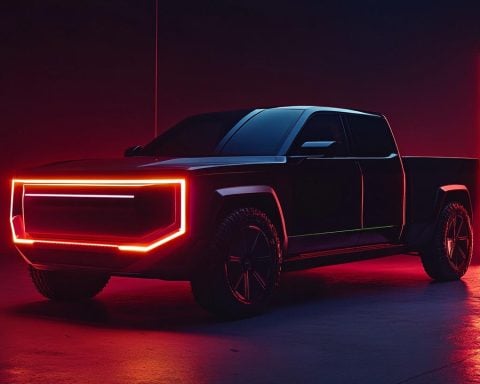The iconic King Tiger and the modern M1 Abrams stand as titans in the realm of armored warfare. Each represents the pinnacle of engineering in its era, yet they are separated by decades of technological advancements. This comparison – though spanning different eras – highlights how warfare technology evolved from World War II to the modern age.
The King Tiger, or Tiger II, was birthed in the heat of World War II, and it was Germany’s formidable attempt at creating an unbeatable heavy tank. With its impenetrable armor and a powerful 88mm gun, it was one of the most feared vehicles of its time. However, its impressive profile was marred by frequent mechanical issues and excessive weight, which limited its mobility.
In stark contrast, the M1 Abrams is a marvel of precision engineering, epitomizing modern armored warfare since its introduction in the 1980s. Equipped with advanced composite armor and a 120mm smoothbore cannon, it offers superior protection and firepower. The M1 Abrams benefits from a powerful gas turbine engine, which, although fuel-hungry, grants it remarkable speed and maneuverability.
This comparison reveals the evolution of tank design focus: from the sheer brute force of the King Tiger to the balanced, adaptive strategies exemplified by the M1 Abrams. The King Tiger represents a bygone era where maximalist designs faced logistical limitations, while the M1 Abrams reflects modern priorities of high mobility, advanced technology, and versatility on the battlefield. Each tank, iconic in its own right, underscores the ever-shifting dynamics of war and technology.
The Untold Impact of Tank Evolution on Global Strategies
The journey from the formidable King Tiger of World War II to the cutting-edge M1 Abrams of today marks more than a shift in engineering. It represents a profound evolution in military strategy and international relations, affecting people and nations worldwide.
Interesting Facts and Controversies
Did you know that the King Tiger’s weight, while offering superior protection, often caused it to get mired in mud, making it an easier target for agile enemy forces? This highlights a critical lesson in warfare: sometimes, less is more. The balance of agility and strength became a focal point in post-war tank development, shaping how modern armies approach armored warfare. Contrast this with the M1 Abrams, where the introduction of advanced digital fire-control systems allows for precise targeting even at high speeds. Yet, the dependency on a gas turbine engine raises environmental and logistical concerns due to its high fuel consumption.
Impact on People, Communities, and Countries
The strategic shift from brute force to adaptive mobility observed in tanks like the M1 Abrams reflects broader military doctrines, affecting global defense budgets and arms development policies. Communities near military bases often discuss the economic benefits versus the ethical concerns related to hosting powerful weapons systems.
Asking the Big Questions
How has this evolution in tank technology influenced civilian life? These advancements in military technology often trickle down to civilian industries, enhancing automotive safety features and material science.
For more details, you might want to visit Defense and Army. How we adapt these powerful technologies for peaceful purposes remains our greatest challenge and opportunity.
The article has been updated: 2024-11-08 02:52
Here are some suggested related links for your post:
1. History.com – Explore detailed articles and documentaries on military history, including famous tanks and armored vehicles like the King Tiger and M1 Abrams.
2. Military.com – A comprehensive resource for everything related to military news, equipment, and history, featuring in-depth profiles on legendary tanks.
3. The Tank Museum – The official site of the Tank Museum in Bovington, UK, showcasing a massive collection of tanks and armored vehicles with historical insights.
4. Army Times – Offers news and articles about the U.S. Army, including insights into the development and capabilities of modern armored vehicles like the M1 Abrams.
5. Wikipedia – A free encyclopedic resource containing comprehensive information and references about both the King Tiger and M1 Abrams tanks.
6. Military Factory – Provides detailed specifications, histories, and comparisons of various military vehicles, including the iconic King Tiger and M1 Abrams tanks.
7. Army Technology – This site features the latest developments in military technology, including information on armored vehicles and their operational impacts.
8. BBC News – Offers news articles and features related to defense and military technology, including historical perspectives on legendary tanks.
9. YouTube – A platform for various military documentaries, expert analyses, and historical videos focusing on the legacy of the King Tiger and the M1 Abrams.
10. National Geographic – While primarily known for nature and science, this site also covers historical topics, including influential vehicles in warfare and their impact on military strategies.
The article has been updated: 2024-11-08 16:18
What are some of the key differences between the King Tiger and the M1 Abrams tanks in terms of design and combat capabilities?
The King Tiger, officially known as the Panzer VI Tiger II, was a German heavy tank used during World War II. It was renowned for its formidable 88mm gun, heavy armor (up to 180mm at its front), and overall size, which made it a formidable opponent on the battlefield. However, its significant weight often limited its mobility and speed, making logistical support challenging.
In contrast, the M1 Abrams, developed in the late 20th century, is a modern main battle tank that emphasizes mobility, protection, and firepower. It features a 120mm smoothbore gun, advanced composite armor, and is powered by a gas turbine engine that allows for greater speed and maneuverability compared to the King Tiger. The Abrams also incorporates advanced technologies such as thermal imaging, target acquisition systems, and digital battlefield management, significantly enhancing its combat effectiveness.
Thus, while both tanks represent their respective eras’ cutting-edge tank design, the M1 Abrams outshines the King Tiger in terms of overall versatility, operational range, and technological advancements.





















